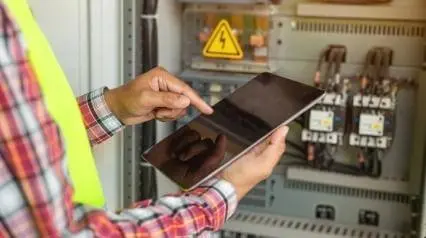What is Electrical Maintenance?
Electrical maintenance is the process of ensuring that electrical equipment is kept in good working order. It includes inspecting, testing, and repairing electrical equipment as necessary to prevent problems that could lead to a loss of power or an electrical fire.
Electrical maintenance is important for both businesses and homeowners, as it helps to ensure the safety of employees and residents and prevents expensive equipment repairs or replacements.
The maintenance of electrical equipment is usually conducted by electricians and maintenance personnel who are knowledgeable in the maintenance process. They also typically follow or use an electrical maintenance checklist. To ensure a safe work environment during maintenance, the implementation of electrical safety rules must always be followed by the personnel in their work area.
What is the Meaning of Electrical Installation and Maintenance?
To put it simply, electrical installation and maintenance is the process of installing and maintaining electrical systems and equipment. It may include tasks such as installing wiring, repairing or replacing damaged equipment, and inspecting electrical systems for safety.
With installation, correctly installing electrical systems is vital to ensure the safety of those working with or near the equipment and to prevent any damaging electrical fires.
Maintenance is equally important, as it helps to keep equipment running safely and efficiently. By inspecting electrical systems regularly and making any necessary repairs, potential electrical hazards can be addressed before they become more serious.
Who Can Do Electrical Maintenance?
Electrical maintenance can be hazardous work, which is why it is essential for those who undertake it to be fully trained and qualified. Some of the responsibilities of those who carry out electrical maintenance include inspecting and testing equipment, fixing faulty wiring and components, replacing worn parts, and maintaining records of all work carried out.
To be thorough with the inspection, professionals can use an electrical maintenance checklist when doing their usual routine. They can also use an electrical safety inspection report checklist as a template to determine whether proper electrical safety measures are being applied.
In relation to this, utilizing a records management software that keeps all the inspections and data in one safe place, is ideal.
Improve your EHS Management
Cultivate a safe working environment and streamline compliance with our EHS solutions.
Explore nowSteps That You Should Know
Electrical safety is always essential, especially for those who are often exposed to electrical shock. Several steps can be taken to ensure safety when working with or around electrical equipment:
-
Use proper safety equipment
Remember, safety first! Make sure you are wearing the necessary electrical safety gear when working with or around electrical equipment. This includes, but is not limited to:
- Insulated Gloves
- Hard Hat
- Goggles
- Insulated Matting
- Safety Boots
-
Shut off power
Whenever possible, shut off power to the affected area before beginning any work. This can help reduce the risk of electrical shock. Also, make sure to inspect first, before handling all electrical equipment to avoid potential shock (e.g. exposed live wires).
-
Beware of standing water
Standing water may seem harmless, but it can be extremely fatal when not noticed, as it can cause severe electric shock when in contact with electricity. Examples of standing water include puddles, rainwater, etc.
Always be aware of potential standing water in the area where you are working. Make sure your work area is dry or away from any wet places.
-
Inspect electrical equipment for damage
Before beginning any maintenance, inspect for any frayed wires, broken insulation, and other signs of damage. Do not use equipment that is damaged to avoid potential hazards that can be harmful to your safety.
-
Schedule periodic inspections
Regular inspection of electrical systems allows you to find and fix any potential problems before they turn into bigger, more expensive issues.
To make inspection easier, you can use a checklist or a tool like the SafetyCulture (formerly iAuditor) to make inspection easy and organized.
Create your own Electrical Inspection Checklist
Build from scratch or choose from our collection of free, ready-to-download, and customizable templates.
Electrical Inspection Checklists


